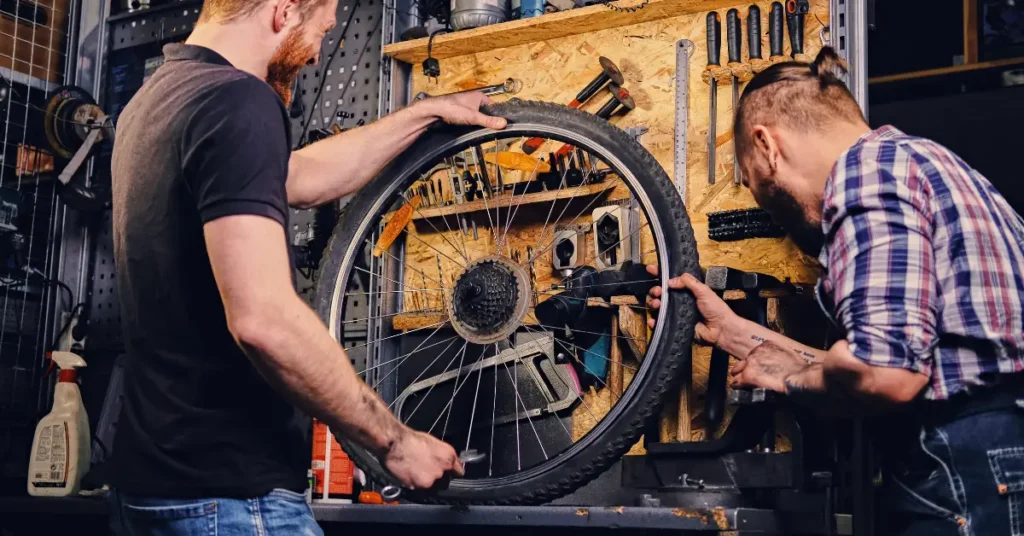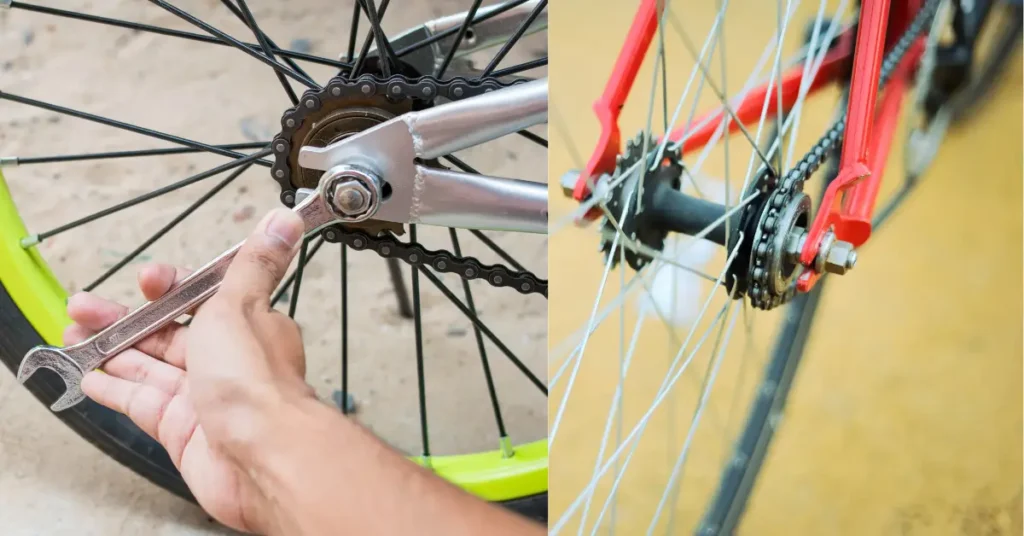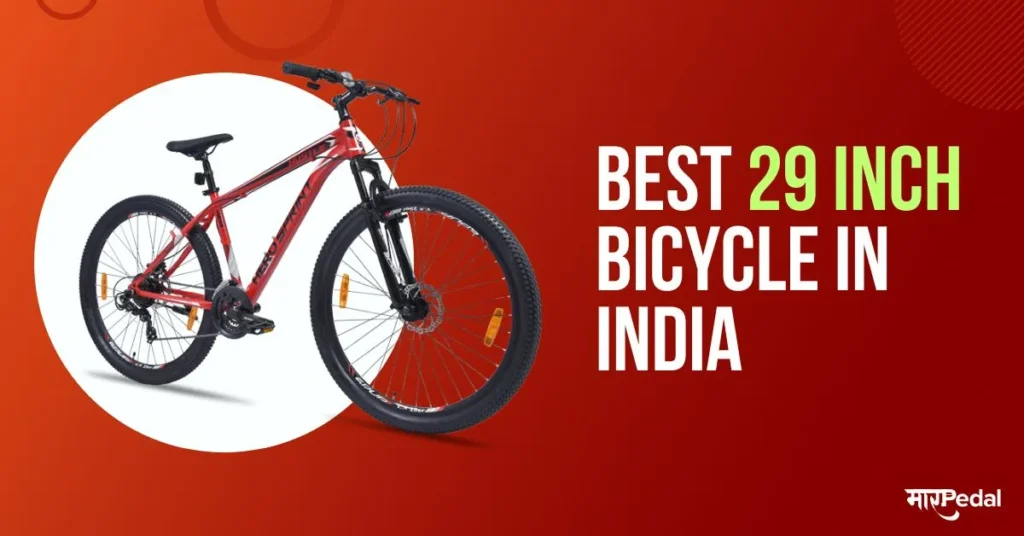
Are you ready to embark on a cycling adventure but finding it challenging to choose between a gear cycle and a normal cycle?
Well, fear not! In this comprehensive guide, we will explore the world of cycling and the contrasting features of gear cycle vs normal cycle.
By the end of this article, you’ll have a clear understanding of the advantages and disadvantages of each type, enabling you to make an informed decision based on your specific requirements.
So, let’s pedal into the details and discover which option is the right fit for you!
Advantages of Gear Cycle
1. Gear Ratio and Speed
One of the primary advantages of a gear cycle is the ability to change gears, which provides a wide range of gear ratios.
By selecting an appropriate gear ratio, cyclists can achieve different speeds and optimize their pedaling cadence.
Gear cycles enable riders to maintain a comfortable pedaling rhythm while adapting to various terrains and cycling conditions.
2. Efficient Power Transfer
The gear mechanism in a gear cycle allows for efficient power transfer from the rider to the wheels.
By selecting the appropriate gear ratio, cyclists can maximize their pedaling power, making it easier to cover long distances with less fatigue.
The gear system enables riders to distribute their energy more effectively, resulting in a smoother and more efficient cycling experience.
3. Easier Hill Climbing

Hill climbing can be challenging, especially when riding on steep inclines. Gear cycles offer an advantage in such situations.
By shifting to a lower gear, cyclists can generate more torque, making it easier to conquer uphill sections. The ability to downshift when approaching challenging terrain is a significant advantage that gear cycles provide.
Disadvantages of Gear Cycle
1. Cost
Gear cycles are generally more expensive than normal cycles. The inclusion of gears and a more complex drivetrain system increases the production cost of gear cycles.
Additionally, maintenance and repairs for gear cycles may require specialized knowledge or assistance, further adding to the overall cost.
2. Maintenance

Gear cycles require more frequent maintenance compared to normal cycles. The gear system needs periodic adjustments, lubrication, and occasional replacements.
Neglecting maintenance can lead to gear-shifting issues and decreased performance. Therefore, gear cycle owners should be prepared to invest time and effort into maintaining their bicycles properly.
3. Complexity
The gear system adds complexity to the overall structure of a bicycle. With multiple gears and components, gear cycles require more attention to detail during assembly and maintenance.
This complexity might be overwhelming for some riders, especially beginners or those who prefer a simpler cycling experience.
Disadvantages of Normal Cycle
1. Limited Speed
Without the gear system, normal cycles have a fixed gear ratio, limiting the range of speeds a rider can achieve.
This limitation can be a drawback when it comes to cycling on different terrains or when attempting to reach higher speeds.
Riders who frequently encounter varying cycling conditions might find the limited speed range of normal cycles restrictive.
2. Limited Power

The lack of gears in normal cycles can make it more challenging to generate power efficiently, especially when facing uphill sections or strong headwinds.
The absence of lower gear ratios reduces the torque available, requiring riders to rely more on their physical strength and stamina.
This limitation can result in increased fatigue and decreased performance in demanding cycling situations.
3. Challenging Hill Climbing
Climbing steep hills with a normal cycle can be arduous due to the fixed gear ratio. Without the ability to shift to a lower gear, riders must rely solely on their strength and endurance to conquer inclines.
This can be particularly challenging for less experienced or less physically fit cyclists, as it requires more effort and can lead to early exhaustion.
Comparison of Gear Cycle vs Normal Cycle
Now that we have explored the advantages and disadvantages of both gear cycles and normal cycles, let’s compare them across several aspects:
1. Speed and Efficiency
Gear cycles offer a wider range of gear ratios, allowing riders to achieve higher speeds and optimize their pedaling efficiency.
Normal cycles, with their fixed gear ratio, have a more limited speed range and may require more effort to maintain high speeds.
2. Terrain Adaptability

Gear cycles excel in adapting to different terrains, particularly when faced with hills or challenging inclines. The ability to shift to lower gears provides the necessary torque for uphill climbing.
Normal cycles, with their fixed gear ratio, may struggle on steep inclines and uneven terrain.
See also: How Fast Can A Bike Go Downhill?
3. Cost and Maintenance
Gear cycles tend to be more expensive than normal cycles due to the additional gears and complex drivetrain system. They also require more frequent maintenance to ensure optimal performance.
Normal cycles, on the other hand, are more affordable and have lower maintenance requirements, making them a cost-effective and convenient option.
Conclusion
When deciding between a gear cycle and a normal cycle, it’s essential to consider your specific needs, budget, and cycling preferences.
Gear cycles offer advantages in terms of speed, efficiency, and adaptability to various terrains.
However, they come with higher costs and maintenance requirements. Normal cycles provide simplicity, lower cost, and low maintenance, but have limitations in speed, power, and hill climbing.
Ultimately, the choice between a gear cycle and a normal cycle depends on your personal priorities and the type of cycling experience you seek.
Assess your cycling goals, terrain conditions, and budget to make an informed decision that best suits your needs.
FAQs
Gear vs. Non-Gear Cycle: Which is Better?
The answer depends on your specific needs and preferences. Gear cycles offer more speed, efficiency, and adaptability to different terrains. Non-gear cycles, on the other hand, are simpler, more affordable, and require less maintenance. Consider factors such as your cycling goals, terrain conditions, and budget to determine which option suits you best.
Which Gear to Use When Going Uphill on a Bicycle?
When tackling uphill sections, it’s recommended to shift to a lower gear. Lower gears provide higher torque, making it easier to pedal and maintain a steady cadence while climbing. Experiment with different gear combinations to find the one that allows you to conquer uphill inclines comfortably.
How to Ride a 21-Gear Bicycle?
Riding a 21-gear bicycle involves familiarizing yourself with the gear shifting mechanism. Start by understanding the gear indicators and how they correspond to the front and rear gears. Practice shifting gears gradually and get a feel for the different gear ratios. Experiment with gear combinations to find the optimal one for your riding conditions and pedaling preferences.
How Does a Gear Cycle Work?
Gear cycles employ a system of gears and derailleurs to provide different gear ratios. When you shift gears, the chain moves between different-sized front chainrings and rear cogs. This alters the gear ratio, allowing you to adapt to various cycling conditions. By selecting the appropriate gear, you can optimize your pedaling efficiency and adjust your speed.
How Do You Calculate the Gear Ratio on a Bicycle?
To calculate the gear ratio on a bicycle, divide the number of teeth on the front chainring (gear) by the number of teeth on the rear cog (gear). For example, if the front chainring has 50 teeth and the rear cog has 20 teeth, the gear ratio would be 2.5 (50/20). This ratio represents how many times the rear wheel rotates compared to the pedal crank for each revolution.
Which Gear is Used for High Speed in a Cycle?
For achieving high speeds on a cycle, it’s advisable to shift to a higher gear. Higher gears offer more speed with each pedal stroke, allowing you to cover greater distances efficiently. Experiment with different gear combinations and select a higher gear that enables you to maintain a comfortable cadence while maximizing your speed.
Remember, mastering gear-shifting techniques and understanding gear ratios takes practice. Experiment with different gears and observe how they affect your cycling experience. Over time, you’ll develop a better understanding of gear usage and be able to optimize your ride.






